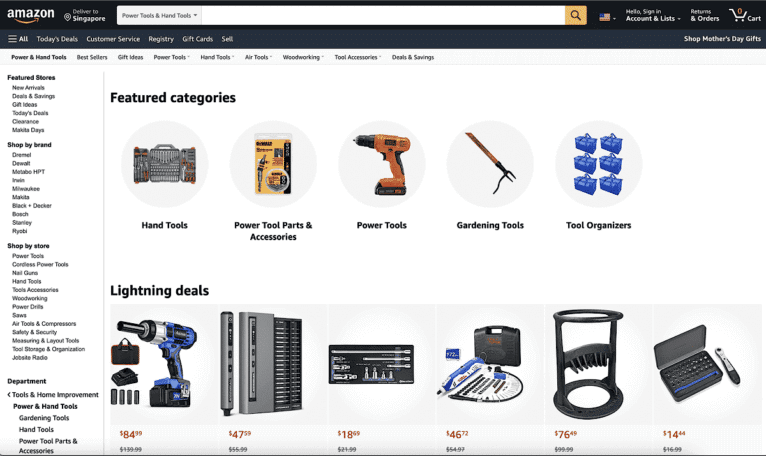In today’s competitive digital landscape, search engine optimization (SEO) has become an essential component of any successful online marketing strategy. But with so many businesses vying for top rankings on search engine results pages (SERPs), it can be challenging to set yourself apart from the pack.
That’s where competitor analysis comes in – by studying your competitors’ strategies and identifying areas where you can improve your SEO efforts, you can gain a valuable edge in the marketplace.
In this article, we’ll explore how to conduct effective competitor analysis using SEO analytics tools and techniques, empowering you to unlock the full potential of your online presence.
Understanding Your Competitors’ SEO Strategies
When it comes to SEO, understanding your competitors’ strategies is critical. The first step is to identify who your competitors are and analyze their website structure, content strategy, backlinks profile, social media presence, and overall user experience. Consider investing in specialized tools and software that can help you identify what keywords they’re targeting, which pages on their site are the most successful at driving traffic and conversions, how frequently they’re publishing new content, etc.
Once you’ve gathered all this information about your main competitors’ SEO strategies through analytics tools like Ahrefs or SEMrush, use it as a benchmark to determine where you stand against them. This information can also help inform your strategy moving forward as you consider ways in which you can differentiate yourself from the competition.
Ultimately, conducting an effective competitor analysis is an ongoing process – just because someone isn’t competing with you today doesn’t mean they won’t be tomorrow. With that said though when conducting competitor analysis keep in mind that imitation may not always be the best solution; instead of replicating what others are doing try finding unique angles within under-represented keyword space for example- this way search engines reward originality over replication
Identifying Your Competitors’ Top Performing Pages
One key component of effective competitor analysis is identifying your competitors’ top-performing pages. These are the pages that consistently rank well on search engine results pages and drive significant traffic to your competitors’ websites.
By analyzing these high-performing pages, you can gain valuable insights into the keywords, content, and user experience elements that contribute to successful SEO.
To identify your competitors’ top-performing pages, start by conducting a thorough analysis of their website using an SEO analytics tool such as SEMrush or Ahrefs. Look for pages with high organic traffic volumes and strong keyword rankings in your industry. Pay attention not only to which specific keywords these pages rank for but also to how they incorporate them into their content strategy.
Once you have identified your competitors’ top-performing pages, take a closer look at their structure and formatting. Do they use compelling headings? How do they organize their content? Are there any interactive features or other multimedia elements incorporated into the page? By answering these questions and identifying best practices among your competition’s high-performing landing spots, you can begin improving upon both existing and future SEO strategies on behalf of your own business.
Analyzing Your Competitors’ Backlink Profiles
Analyzing your competitors’ backlink profiles is an invaluable component of effective competitor analysis. Backlinks essentially serve as a vote of confidence from one website to another, indicating relevance and authority in the eyes of search engines like Google.
By reviewing your competitors’ backlink profiles, you can identify sources and types of backlinks that are helping their SEO efforts – such as high-quality guest posts or links from industry associations – and potentially mimic these strategies in your link-building campaigns.
In addition to identifying successful tactics, analyzing competitors’ backlink profiles can help uncover potential areas for improvement in your SEO efforts. For example, if you notice many of your top rivals have lost significant numbers of high-quality links recently, it may indicate they’ve violated Google’s Webmaster Guidelines with paid link schemes or other black hat techniques.
This presents an opportunity for you to avoid these potentially detrimental practices while building better relationships with reputable websites in your industry niche to acquire natural, quality links over time.
Ultimately, by examining the specifics behind how other businesses build valuable connections around the web through their link profiles and cautiously applying similar techniques to our optimization strategies where applicable; we can start measuring our progress towards ranking on high-visibility outcomes pages relative to our competition then create sustainable results that ensure stronger visibility long-term.
Evaluating Your Competitors’ Keyword Usage
One important aspect of conducting a competitor analysis is evaluating your competitors’ keyword usage. By analyzing the keywords they’re targeting and ranking for, you can gain insights into what works in your industry and how to optimize your website accordingly. There are various tools available that allow you to track your competitors’ keyword performance over time, such as SEMrush or Ahrefs.
It’s important to not just focus on the keywords themselves, but also on the context and intent behind them. Are they using long-tail keywords for more specific searches or broad keywords with high search volume? What types of content are they creating around these keywords? Examining their content strategies can provide valuable ideas for creating new content or optimizing existing pages on your site.
Additionally, it’s important to assess how well your competitors are performing with their chosen keywords. Just because they rank highly for a certain term doesn’t necessarily mean it’s driving significant traffic or conversions. Analyzing their click-through rates and conversion rates about specific keywords can help you prioritize which terms are most valuable and where there may be opportunities to outperform them. By thoroughly evaluating your competitors’ keyword usage alongside other factors such as backlinks and site structure, you’ll be better equipped to enhance your SEO strategy and achieve higher rankings on SERPs.
Comparing Your Competitors’ Content Marketing Efforts
Comparing your competitors’ content marketing efforts is an essential aspect of any successful SEO strategy. By analyzing the kind of content they are producing, you can identify new opportunities and areas for improvement in your approach. This process involves examining various factors, such as the type of content being created (blogs, infographics, videos), its quality, and how it matches up to your own.
To conduct a thorough analysis of your competitor’s content marketing efforts, start by creating a spreadsheet with their URLs and their relevant data points (such as social shares). Once you have this information organized coherently in one place, analyze each piece’s relevance to target keywords or phrases carefully.
Look into where your competition is making use of multimedia within blogs or other types of written content-text formatting specifically- what unique features are included that captivate readers? Even small differences like these could be causing you to miss out on potential traffic if not also considered.
Overall, remember that effective competitor analysis takes time and effort but results in significant payoffs for businesses looking to improve SEO performance drastically. Keep an eye on recent trends that work well within industries similar to yours when evaluating key metrics such as frequency/quality per post & link-building effectiveness between current campaigns run against specific blogs we seek insights from along our journey toward higher SERP rankings!
Monitoring Your Competitors’ Social Media Engagement
One aspect of effective competitor analysis involves monitoring your competitors’ social media engagement. Social media has become a powerful tool for businesses to connect with their audience and build brand awareness, making it an important factor in any SEO strategy.
By keeping tabs on how your competitors are leveraging social media, you can identify which platforms they’re utilizing, what types of content they’re posting, and how their followers are responding.
There are several tools available that can help you track your competitors’ social media presence. These tools allow you to monitor metrics such as follower counts, engagement rates, and post frequency across various social networks. With this information in hand, you can gain insights into your competitors’ strategies and make informed decisions about where to allocate resources to improve your performance.
Overall, monitoring your competitors’ social media engagement is just one piece of the puzzle when it comes to effective competitor analysis. By taking a comprehensive approach to understanding what sets your competition apart from the rest of the pack – including everything from website structure and content quality to keyword usage and link-building techniques – you’ll be better positioned to succeed in today’s digital landscape.
Implementing Your Findings to Improve Your SEO Strategy
Once you have analyzed your competitors’ SEO strategies and gathered data on what’s working for them, the next crucial step is to implement these findings into your SEO strategy.
You could start by identifying specific keywords that are ranking well for your competitors, and incorporating those into your website content and metadata. Additionally, you may want to take cues from their link-building tactics or social media engagement methods to improve your online presence.
It’s essential not just to blindly copy what others are doing, but rather adapt these strategies to fit the unique needs of your business. By creating a nuanced approach based on insights gained from the competitor analysis, you can optimize your website for search engines while also differentiating yourself from other businesses in similar fields.
Finally, always track progress over time through analyzing analytics tools- this will help refine future efforts and ensure continuous improvement of SEO results for better online visibility in any industry.





